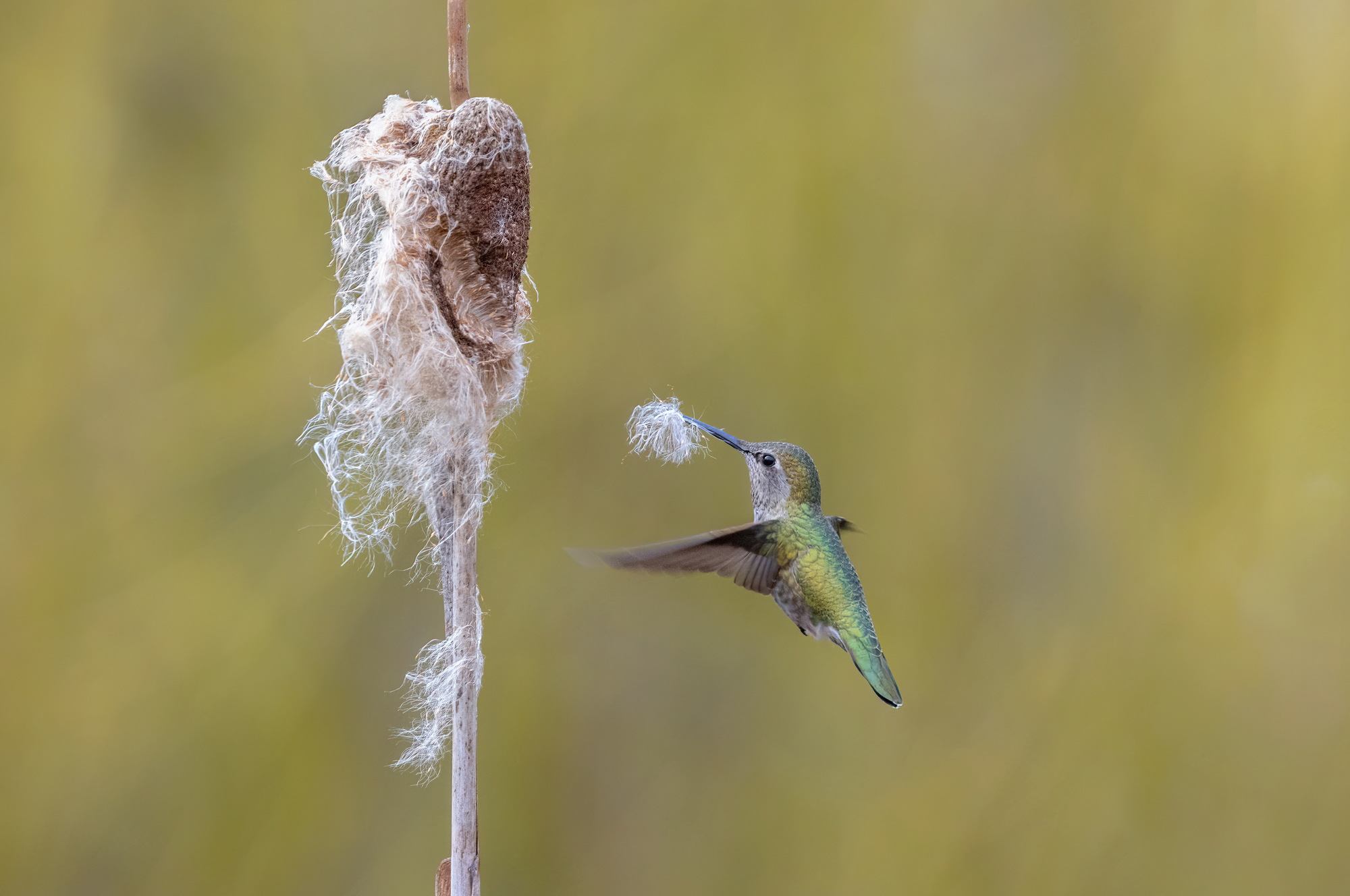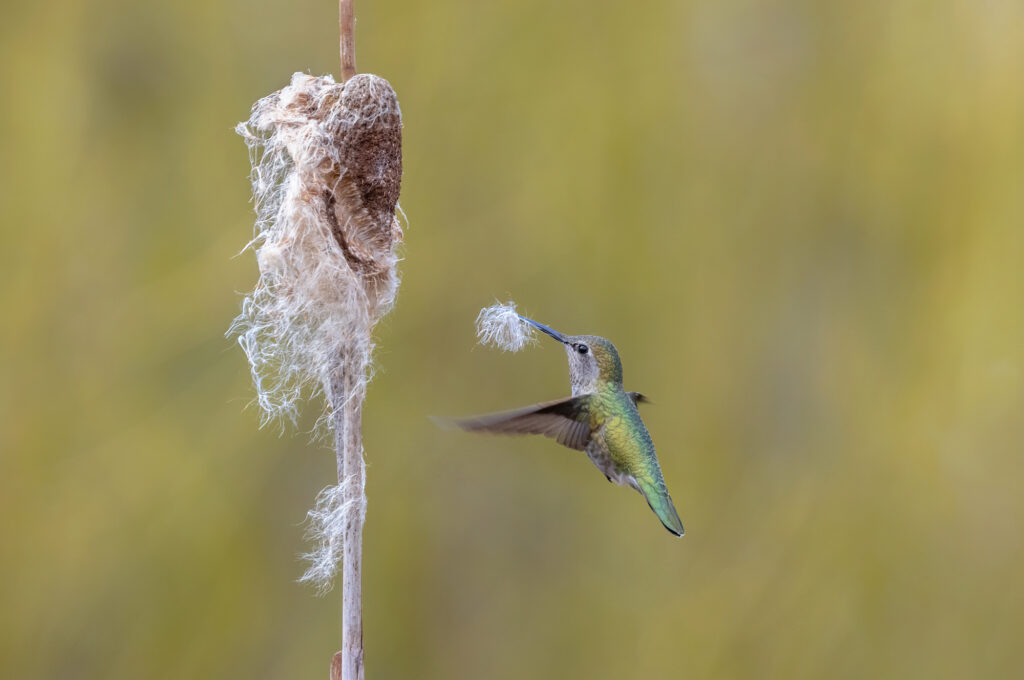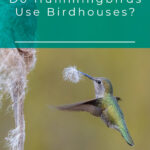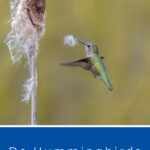Are you a hummingbird lover? Of course, you are!
Hummingbirds are so beautiful and fascinating to watch; many of us want to do everything we can to make them feel welcome in our backyards.
But when you’ve put out nectar feeders, rolled out the red carpet of flowers, and even dried fruit slices, what else is there to do to lure these jeweled beauties to your garden?
It might tempt you to set up birdhouses in your yard. What could be more adorable than the world’s tiniest bird setting up its family in something that looks like a dollhouse?
There are even all shapes and sizes of birdhouses marketed specifically for hummingbirds: ceramic gourds, hanging baskets, stumps with bark doors, and moss roofs.
But, do hummingbirds use birdhouses? Should you spend your money or your crafting skills providing houses for hummingbirds?
Do Hummingbirds Use Bird Houses?
No, hummingbirds do not use bird houses. Sorry to pop that adorable bubble!
People build birdhouses to mimic the nesting conditions of cavity-nesting birds, who prefer to nest inside a small, dark space. They’re attracted to things like a hollowed-out tree trunk or even a chimney if they can find it!
They may also use small holes they can find or hollow out on the exterior of your home or shed. They’re the ones who will take advantage of a birdhouse.
Whereas, female hummingbirds build delicate, cup-shaped nests from a variety of materials like mosses, lichens, spider silk, and other fluffy material. They may also use bits of bark to help camouflage the exterior of the nest, which is usually only about an inch in diameter.
What Kind of Bird Houses Do Hummingbirds Like?
Hummingbirds will not use any kind of bird house for nesting. It doesn’t matter what size, shape, color, or construction you use; they simply will not move in.
Hummingbird nests are tiny cup-shaped structures they build in the crook of a forked tree branch, about a foot away from the trunk. They prefer trees growing near water, which helps to keep the nest cool.
They may also build their nests in a man-made location, such as on an electric wire or plant hanger. Foliage cover helps hummingbirds feel safe and protected, unlike a cavity nest or man-made birdhouse.
Where Should You Put a Hummingbird House?

While hummingbirds will ignore a man-made bird house, you can offer shelter that will make your yard more attractive for them.
Look into which trees and shrubs are native to your region. Then pick out a few different sizes to plant around your yard. If you’d like to gain bonus points in the hummingbirds’ eyes, choose trees that offer nectar-rich flowers or fruit — especially dark fruit.
If you’re in a desert region, native plants might mean desert plants such as cacti and scrub brush, but the idea is the same. Hummingbirds prefer to nest around the edges of your yard, so that’s the best place to plant trees for them.
You should avoid pesticides when gardening for hummingbirds, which could hurt the birds directly, and could also kill off the insects that are an important part of their diet.
If you really want to go the extra mile, you can consider leaving around household scraps such as bits of thread, dog fur, hair from your hair brush, cat fur, and dryer lint, which hummingbirds gladly swipe up for their nests!
One last thing: Hummingbirds prefer to nest within one-half mile of a food source, so planting their preferred nesting trees close to your hummingbird feeders will make your yard look like a hummingbird paradise to them.
What Do Hummingbirds Use for Shelter?
Hummingbirds are big fans of foliage cover. That means that they like living and nesting in areas where there are trees and shrubs of varying heights around. They build a tiny, cup-shaped nest in the forks of tree branches, anywhere from 10 to 90 feet off the ground.
Many hummingbirds prefer deciduous trees, like oak, birch, or poplar, but some prefer pine and other conifers. They also may build their nest on man-made structures.
While the walls of the cavity nest make other birds feel safe and protected, the foliage cover that these trees provide works great for hummingbirds — especially during nesting season.
Hummingbirds like to use soft materials to build their nests. This includes plant materials, like moss, lichens, and soft seeds like milkweeds and dandelions. Another critical element is spider webs, which help their nests stick together and hold their shape.
Do Hummingbirds Nest in the Same Place Every Year?
No, hummingbirds don’t nest in the exact same location each year. Their nests are pretty delicate, and by the time the baby hummingbirds have grown up and flown away, the nest is worn out.
Species of hummingbirds that have multiple clutches (batches of eggs) per year may even build nests in several spots during the same breeding season.
However, hummingbirds have excellent memories, and they will return to the same areas each year. While they won’t rebuild their nests in the exact same spot as before, they may linger nearby.
Having food, water, and other important resources nearby will determine whether a hummingbird continues to use the same nesting area or not.
Give Me Shelter
Hummingbirds prefer shelter for nesting, but their idea of shelter is definitely not a birdhouse of any kind.
Skip the crafting and rely on the plants in your garden to provide for the hummingbirds’ needs. Native shrubs and trees in a variety of sizes are best for offering hummingbirds the foliage cover that helps them feel safe!











